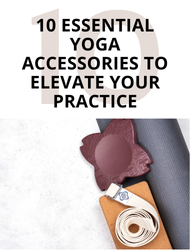Start your Affiliate Journey with AWIN
If you're a creator looking to turn your passion into a
revenue stream, affiliate marketing is one of the most authentic ways to do so
— without compromising your values. But how do you begin?
At VENNDY, we believe in alignment — aligning your voice, values, and income.
At VENNDY, we've created an open platform that empowers you to link to any URL, regardless of whether it includes affiliate links.
This flexibility allows you to work with both small and large advertisers, choosing partners who align with your values.
Whether it's promoting sustainable brands, supporting artisans, uplifting small businesses, or simply sharing the local bakery you love, VENNDY ensures that your affiliate journey reflects your true mission.
We believe your shopfront should support you the way you envision it — authentically and in line with the causes that matter most to you.
You can also partner with a few affiliate networks to find your favorite brands. Still, in this blog post, we will focus on the first one we start with, which, on the one hand, is big enough and, on the other, is super friendly and inviting to new content creators. You're good to go as long as you have an online presence, like a blog or social media account (even Instagram or Pinterest).
This post will explain why AWIN is a solid choice for affiliate marketing, how it works, and how we can guide you to your first sale.

Who is AWIN?
AWIN is a global affiliate network that connects businesses with creators who can promote their products or services.
As an affiliate, you share links to these products, and when your audience purchases through your link, you earn a commission. AWIN'splatform provides access to a vast range of brands, allowing you to choose partnerships that align with your values and resonate with your audience.
AWIN offers high-quality affiliate programs across various industries, including fashion, health, technology, and wellness. AWIN is committed to transparency, reliability, and supporting creators in their journey to success.
Why AWIN and Not Other Networks?
There are a lot of affiliate networks out there, so why should you choose AWIN over others? Here are a few reasons:
1. Alignment with Your Values: At VENNDY, we emphasize the importance of alignment — monetizing your content while staying true to your values. AWIN's diverse range of programs means you can choose to work with brands that resonate with you and your audience. Whether you're passionate about wellness, eco-friendly products, or small businesses, AWIN offers you the opportunity to connect with like-minded brands.
2. Global Reach: AWIN operates globally, offering you the opportunity to work with international brands and expand your reach across borders. This global network allows you to tap into a larger audience and increase your chances of earning affiliate income.
3. Comprehensive Analytics: AWIN provides powerful tools to track your affiliate performance, offering transparency about your commissions, clicks, and conversions. This makes it easier to refine your strategy and ensure you're maximizing your earning potential.
4. Trust and Reliability: AWIN is trusted by both creators and brands. The platform is designed to foster long-term relationships, ensuring that creators are compensated fairly and on time. As someone who values trust, transparency, and alignment, AWIN provides the reliability you need.
5. Access to Major Brands: AWIN partners with top-tier brands that align with various niches. Whether you're in fashion, lifestyle, wellness, or tech, AWIN has reputable brands that can match your audience's needs and interests.
-
Beauty: Nutree Cosmetics
-
Business: Fiverr
-
Creativity: Etsy, Craftstash
-
Travel: Anantara

How Does AWIN Work?
Getting started with AWIN is simple:
1. Sign Up: First, create an account on AWIN. It's free to join, and the platform is user-friendly. You'll need to enter a credit card and be charged 1USD/EURO, to identify your identity. This deposit is repaid with your first commission.
2. Select Your Programs: Once you're registered, you can explore the programs available and choose the ones that fit your values and your audience's interests.
3. Promote Your Affiliate Links: After selecting the programs, you'll get affiliate links to share with your audience. These links can be integrated into your VENNDY shopfront, blog posts, Instagram stories, YouTube videos, or anywhere you engage with your followers.
4. Track Performance: AWIN's analytics dashboard allows you to track your clicks, conversions, and commissions in real-time. This transparency allows you to understand what's working and what isn't so you can optimize your approach.
5. Earn Commissions: When someone purchases a product or service using your affiliate link, you earn a commission. AWIN's system tracks this automatically, and you'll be paid directly into your bank account.
Why VENNDY's Open Platform Is Different
Unlike other shopfront tools for creators, where you are restricted to linking only to products from within their platform and brands that are part of the affiliate network, VENNDY gives you complete freedom. We believe in aligning with your center — starting from there and building authentically.
As we said, VENNDY is an open platform where you can link to any URL, whether it's a brand with an affiliate program or not.
This flexibility ensures that your affiliate journey aligns with your center and lets you choose what's meaningful to you rather than being confined to a curated list of brands that may not fully reflect your values.

What Can Help You Make Your First Sale?
Here's how we can support you in making your first sale:
1. Choose the Right Products: It all starts with what you believe in. We'll help you select affiliate programs that resonate with your values. Whether you're recommending wellness products, eco-friendly brands, or any other niche, we'll help you find products that feel right for you and your audience.
2. Build Trust with Your Audience: Successful affiliate marketing doesn't just rely on your ability to share links — it's about building trust. We'll guide you on how to weave affiliate recommendations naturally into your content, showing your audience why you stand behind what you're sharing. Transparency is key; we'll share strategies to help you do this with integrity.
3. Optimize for Conversions: We'll show you how to optimize your content to encourage conversions. This might mean crafting stories around the products you're recommending or using storytelling techniques that make the recommendation feel genuine and organic.
4 Engage Your Community: Your audience is the heart of your affiliate marketing success. We'll help you engage with your community in a way that fosters genuine connections. People are more likely to trust your recommendations when they feel seen, heard, and valued.
5. Measure Your Success: With AWIN's powerful analytics tools, you'll have insights into what's working and what isn't. We'll help you interpret these metrics and adjust your strategy for continual growth and success.

Start Your Affiliate Journey Today
At VENNDY, we're building a platform for creators to monetize from their center — not from performance or pressure. We believe in offering value, building trust, and helping you share what you love in an authentic way.
Starting your affiliate journey with AWIN is a natural extension of this vision. With AWIN's powerful network, reliable tools, and transparent analytics, you'll be equipped to make your first sale and continue growing your affiliate business.
How Can We Help You Further?
We've created a sequence of emails that will walk you through the steps from signing up to choosing the right programs for you to help you grow.
To sign up to this email sequence - sign up HERE:
If you are ready to get started and Sign up with AWIN - Let's do it: sign up HERE, choose the right products for your audience and start building your authentic affiliate income. We're here to support you every step of the way.
















